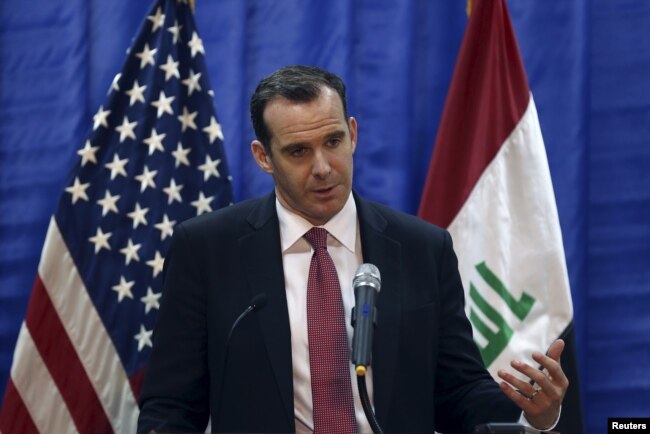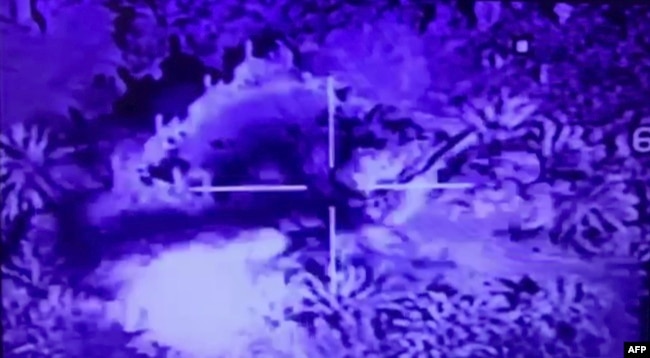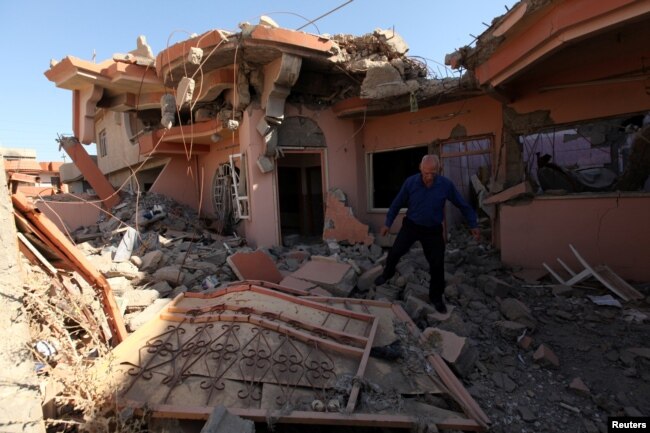U.S. President Donald Trump’s tweet early Wednesday on the fight against the Islamic State terror group in Syria was definitive, reports VOA News.
“We have defeated ISIS in Syria,” he wrote, using an acronym for the group, adding the defeat of the group was “my only reason for being there during the Trump Presidency.”
We have defeated ISIS in Syria, my only reason for being there during the Trump Presidency.
— Donald J. Trump (@realDonaldTrump) December 19, 2018
“The United States has defeated the territorial caliphate,” White House Press Secretary Sarah Sanders said in a statement issued about an hour later. “We have started returning United States troops home.”
About an hour after that, the Pentagon weighed in.
“The Coalition has liberated the ISIS-held territory,” Chief Defense Department spokesperson Dana White said in a statement, cautioning “the campaign against ISIS is not over.”
Statement came as surprise
All three statements took many in the defense and intelligence communities by surprise, as it countered the narrative that had been laid down by multiple officials for months, and voiced just last week.
“Obviously, it would be reckless if we were just to say, well, the physical caliphate is defeated, so we can just leave now,” Brett McGurk, the special presidential envoy for the Global Coalition to Defeat ISIS, told reporters during a State Department briefing Dec. 11.
“I think it’s fair to say Americans will remain on the ground after the physical defeat of the caliphate, until we have the pieces in place to ensure that that defeat is enduring,” McGurk added, warning that despite significant progress against the remaining IS forces in their Middle Euphrates River Valley stronghold of Hajin, completing the conventional military campaign would take “a period of months.”
The number of IS fighters in the area, McGurk said, remained at about 2,000 the same figure U.S. defense officials had been sharing since October describing them as the most hardened of the terror group’s operatives.
The U.S.-led coalition likewise had warned that the final defeat of the caliphate would take time.
“ISIS remnants are fortifying their positions and digging in for a protracted campaign,” Operation Inherent Resolve spokesman Col. Sean Ryan told Pentagon reporters in late November during a video briefing from Baghdad.
“We should remain patient, as fighting will continue to be intense as we continue to pressure the enemy into smaller and smaller spaces,” he said.
“They’re in tunnels, they’re hiding,” Ryan added, cautioning some reinforcements were still getting to the region even though the capabilities were degraded.
IS stronghold
Military concerns about the capabilities and resolve of IS fighters in their remaining Syrian strongholds around Hajin, has also been reflected in a significant increase in the number of airstrikes by the U.S.-led coalition.
According to the coalition, the number of strikes targeting Hajin and surrounding areas almost tripled, from 86 strikes during the last week of November to 250 strikes the first week of December.
Numbers released by the coalition early Wednesday indicated another 207 airstrikes against IS in and around Hajin between Dec. 9 and Dec. 15, with targets ranging from staging areas to command and control centers to petroleum facilities.
As with most airstrike reports from the coalition, there was no estimate on the impact on Islamic State fighters, something defense officials have repeatedly resisted as the fight against the terror group has dragged on.
Still, recent assessments by defense and intelligence officials suggest that even without being able to claim any territory of its own, IS remains a potent and deadly force in both Syria and Iraq.
U.S. Defense Department estimates provided for an inspector general report in August cautioned there are still anywhere from 28,600 to 31,600 IS fighters in Iraq and Syria, close to the 33,000 fighters the terror group was thought to have during its height in 2015.
In Syria alone, defense officials estimated IS had up to 14,500 fighters, with the vast majority, up to 10,000, operating in areas controlled by Syrian, Russian or Iranian forces and beyond the reach of the U.S. and its partners.
IS “is well-positioned to rebuild and work on enabling its physical caliphate to re-emerge,” Pentagon spokesman Cmdr. Sean Robertson told VOA at the time.
Defeat a long way off
U.S. intelligence and counterterrorism officials have also warned, publicly, that an enduring defeat of IS was still a long way off.
IS “remains an adaptive and dangerous adversary, and is already tailoring its strategy to sustain operations amid mounting losses,” Russell Travers, the then-acting director of the U.S. National Counterterrorism Center warned lawmakers in written testimony in October.
“In Iraq and Syria, the group’s leaders are adopting a clandestine posture, moving to rural safe havens in order to support a long-term insurgency,” Travers said, adding the group’s success would “rely heavily on its success in exploiting the grievances and disenfranchisement of local Sunni civilians” in both countries.
That assessment mirrored similar estimates by the U.S. director of national intelligence in his February report on worldwide threats.
“ISIS core has started — and probably will maintain — a robust insurgency in Iraq and Syria as part of a long-term strategy to ultimately enable the reemergence of its so-called caliphate,” the report predicted. “This activity will challenge local CT [counterterrorism] efforts against the group and threaten U.S. interests in the region.”
The administration’s action also seems to run counter to remarks U.S. National Security Adviser John Bolton made in September in New York, ahead of Trump’s planned speech to the U.N. General Assembly.
“We’re not going to leave as long as Iranian troops are outside Iranian borders, and that includes Iranian proxies and militias,” Bolton said at the time, signaling U.S. troops would stay in Syria beyond the defeat of Islamic State militants.
At the same time, Defense Secretary Jim Mattis said while the U.S. military mission in Syria remained the same — focused on defeating IS — the U.S. would not abruptly leave the region, a move that would likely leave people recently freed from IS control vulnerable to a resurgence of militant violence.




